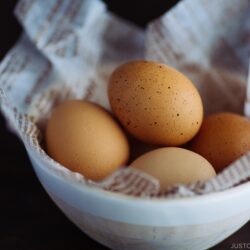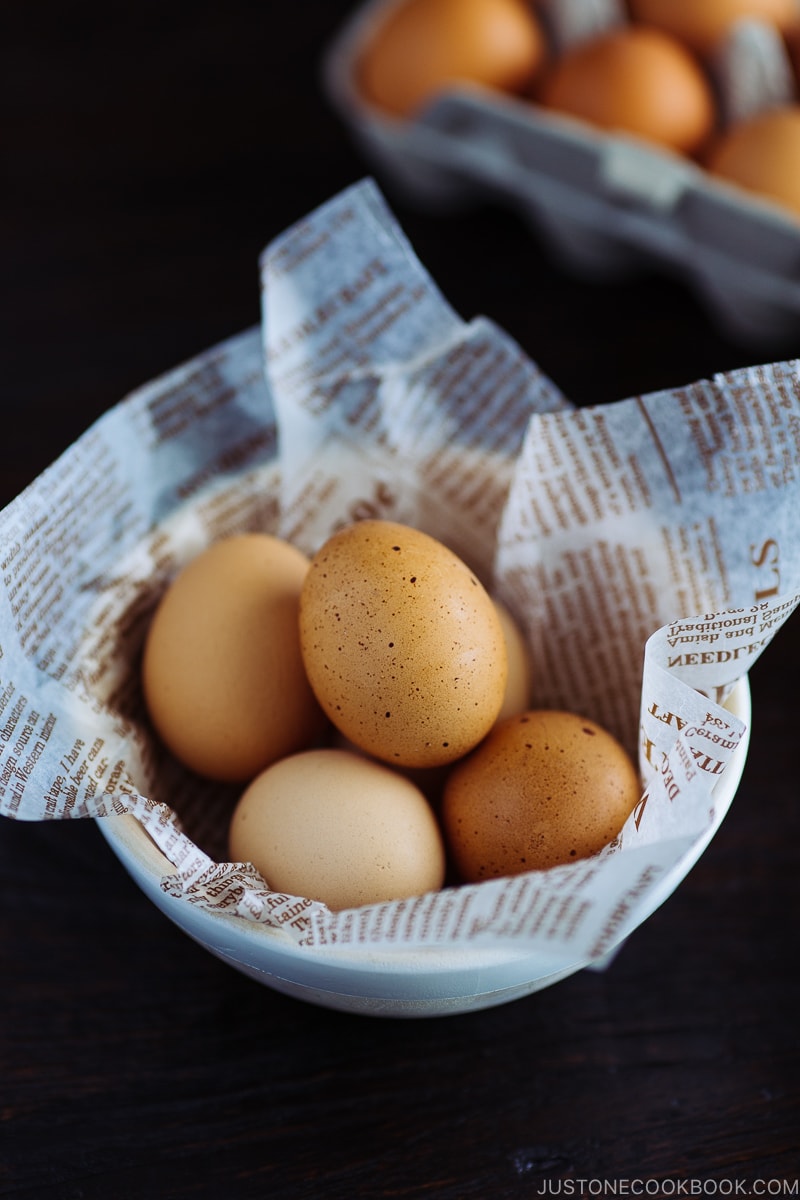
In recipes like Japanese mayonnaise (recipe coming up next), sukiyaki, carbonara, Caesar salad dressings, and ice cream which call for raw eggs or undercooked eggs, you may want to be safe and use pasteurized eggs. You can purchase eggs already pasteurized, but they are rather expensive and often hard to find at your local grocery stores.
However, if you already have an immersion circulator (sous vide machine), it’s actually simple to pasteurize eggs yourself at home.
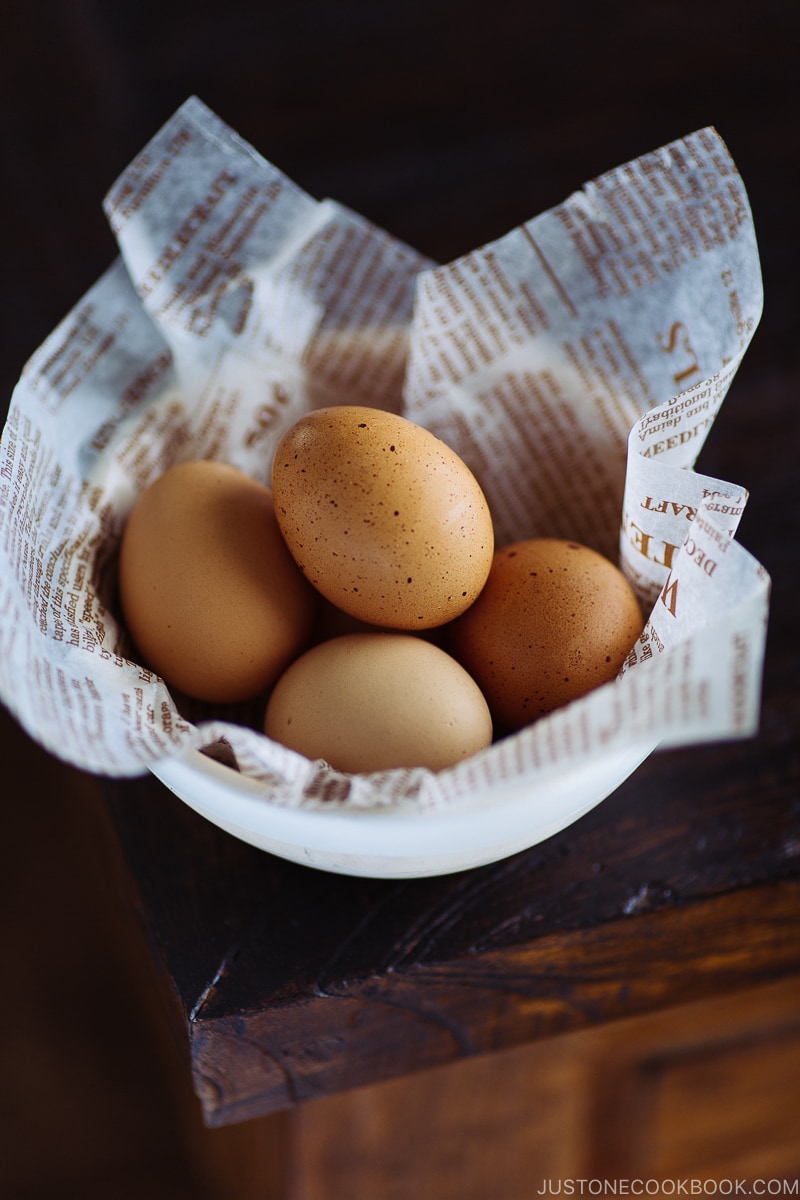
Why Do We Pasteurize Eggs?
Roughly 1 egg out of every 20,000 eggs will contain the salmonella bacteria which cause food poisoning. Cooking the eggs kills the bacteria, but what about those recipes that require raw or undercooked eggs?
That’s where pasteurized eggs come in. They are gently heated in their shells, just enough heat to kill the bacteria without actually cooking the egg. They are similar to ‘raw egg’ but the only difference is that egg whites of pasteurized eggs are opaque, slightly cloudy, and thickened.
Using pasteurized eggs can reduce or eliminate the risk of being infected by the salmonella bacteria when preparing recipes that call for raw or uncooked eggs.
If you’re serving eggs to young children, pregnant women, or elderly people who may have weaker immune systems, pasteurized eggs are the safest choice.
Did You Enjoy Learning How to Pasteurize Eggs?
If you want to learn more kitchen tricks, click here. Thank you so much for reading and till next time!
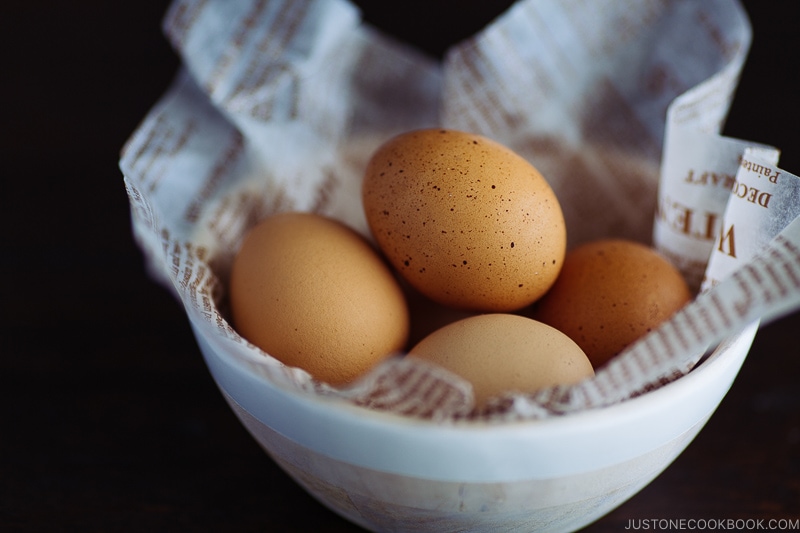
Japanese cooking? Sign up for our free newsletter to receive cooking tips & recipe updates! And stay in touch with me on Facebook, Pinterest, YouTube, and Instagram.
How to Pasteurize Eggs at Home
Equipment
- an immersion circulator
- a large pot
Ingredients
- 6 large eggs (50 g each w/o shell)
- water
Instructions
- DO NOT use scaling (x 2 or x 3) for this recipe.
- Set up the immersion circulator. Fill the pot with water and preheat the immersion circulator to 135ºF (57ºC).
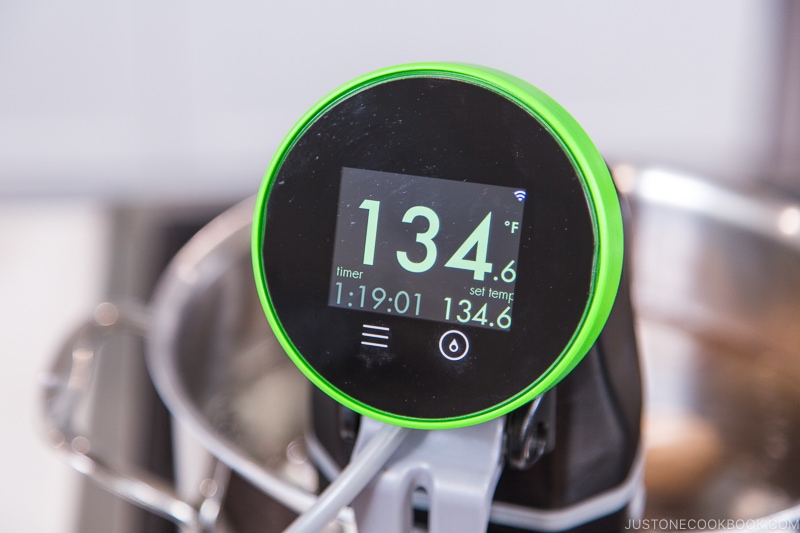
- Gently submerge 6 large eggs (50 g each w/o shell) (no need to vacuum seal) in the water. Cook for 75–80 minutes.
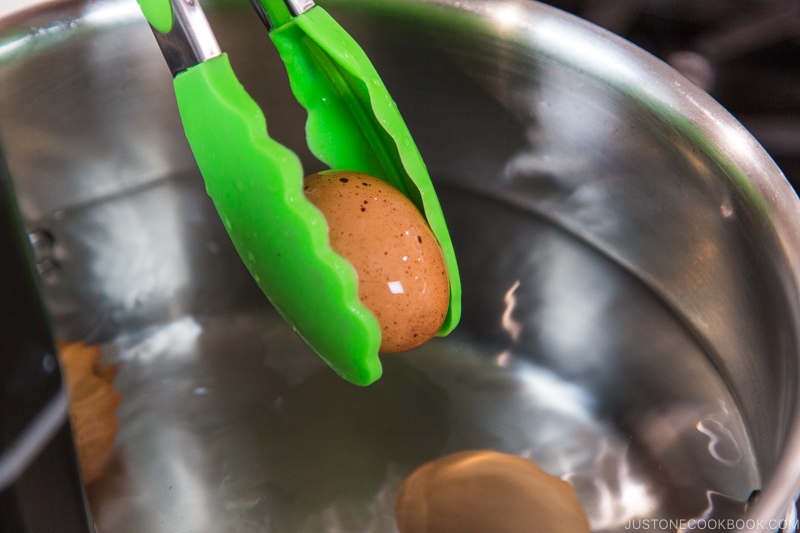
- Remove the eggs and quickly place them in ice water for 30 minutes to stop further cooking. They are ready to use or you can keep them in the refrigerator for up to a week until needed.
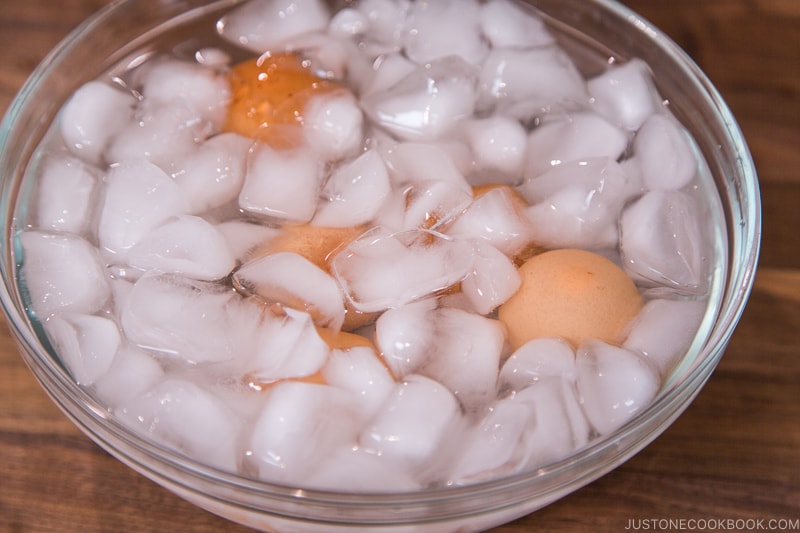
- You can use pasteurized eggs for Sukiyaki. Dip the sukiyaki meat in pasteurized eggs and enjoy!
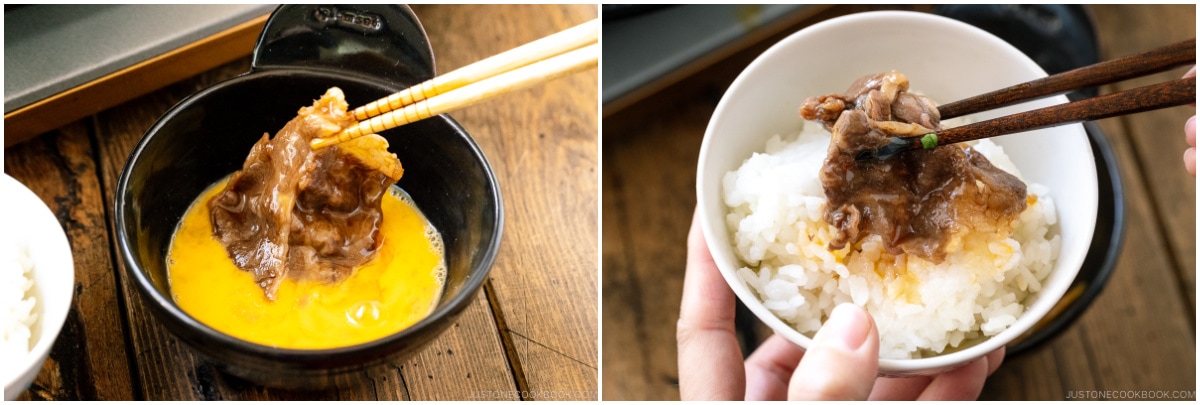
Notes
- Many recipes and articles refer to the study in the Journal of Applied Microbiology. The cooking time says 135ºF (57ºC) for 75 minutes.
- Although it was not needed for me, you can put the eggs in a bag and fill it with preheated water to avoid cracking.
- Please note that your own pasteurized eggs don’t absolutely guarantee their safety 100%, but it should cut down the risk significantly more than using raw eggs.
Did you make this recipe?
Tag @justonecookbook on Instagram so we can see your delicious creation!


